|
|
|
|
||
|
|
||||
|
From the early days in its history
visitors were impressed with the numerous beautiful trees in
Bellwood. Visitors from the east were particularly surprised
about this as it was the general impression that the vast
treeless plains in this region had an environment that was
too hostile for trees. They didn't realize at that time that
the dense prairie grasses had gotten the upper hand on the
trees. What trees did get started along the rivers and
streams were periodically destroyed by prairie fires started
in the dry grass by lightning. When the settlers broke out
the sod for farming they also stopped the raging grass fires
that formerly swept on over thousands of acres.  Where once there were over 100 Cottonwood trees in Bellwood there are scarcely a half dozen of the old trees remaining in town. This old giant is on Loran Schmit's place on the east side of town (SW1/4 SW1/4 Sec. 20). |
 Blue Spruce has long been a popular landscaping tree. This one in the yard of Jim Cockson (Lot 19, Blk 15) is the largest in Bellwood.  Green Ash were originally considered suitable only for grove plantings. This Green Ash in front of the Edith Bell home (Lot 7, Blk 17) is one of perhaps 20 large old Ash trees in Bellwood. Because of their life span, great size and beauty they are now used extensively in landscaping in this region. |
|||
|
139 |
||||
|
|
|
|
||
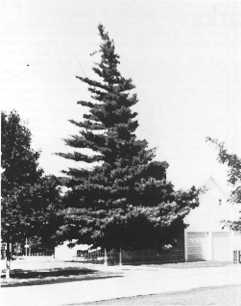 This White Pine in the back yard of the Bob Adamy home (Lot 19, Blk 12) is a beautiful old tree and the only one of its kind in Bellwood. It might seem that because of its shiny black bark and dark needles it should be called Black Pine. However, the lumber sawed from these trees is almost pure white. Every old home in Bellwood was built mostly of Michigan White Pine. Today there are so few commercial stands of White Pine left in the U. S. that the lumber is very expensive. 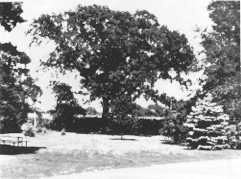 Bur Oaks have proven to be almost indestructible in this region. There are numerous fine specimens of this Oak in Bellwood and in the Bellwood Cemetery that have come through drouths and storms almost unscathed. This unusually large and broad-crowned Bur Oak is in the yard of the old Bell home. |
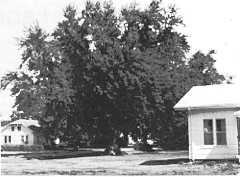 Another old and huge Soft Maple. This one is in the yard of the Clyde and Rhoda Cook home (Lot 11, Blk 13). 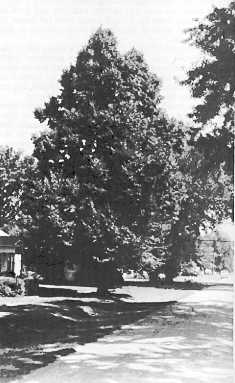 This American Linden or Basswood is the oldest of its specie in town. It is located in front of the home of Frances Ewert (Lot 9, Blk 14). A number of Lindens have been planted on the school grounds and in other locations in Bellwood. They have a symmetrical shape and form a dense shade. |
|||
|
140 |
|
|
|
|
||
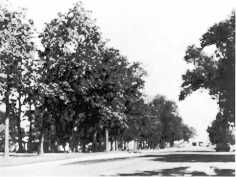 Center parks on the Main Street looking north. These trees, mostly Catalpa, are 100 years old and have attained great size. 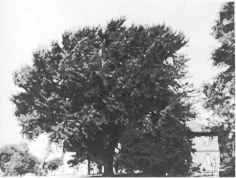 This Soft Maple in the yard of Jim Cockson (Lot 19, Blk 15) is representative of perhaps a dozen or more huge old Maples in Bellwood. 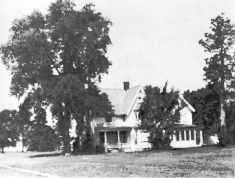 Hackberrys have proven to be one of the most durable trees. They are long-lived and withstand very strong winds. This 100 year old Hackberry in front of the old J. D. Bell home has grown to a size that almost dwarfs this big house. |
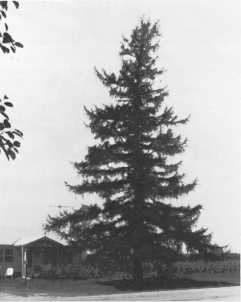 This European Larch or Tamarack in front of the home of Charles and Dorothea Smith (Lot 12, Blk A) is one of less than a dozen in Nebraska. It has cones like the evergreens but sheds its needles in winter. 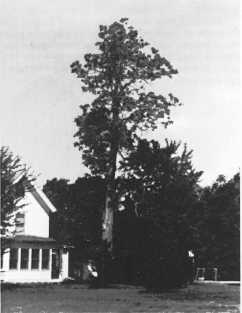 This 100 year old 60 foot Catalpa is in the east yard of the old J. D. Bell home. |
|||
|
141 |
|
|
|
|
|